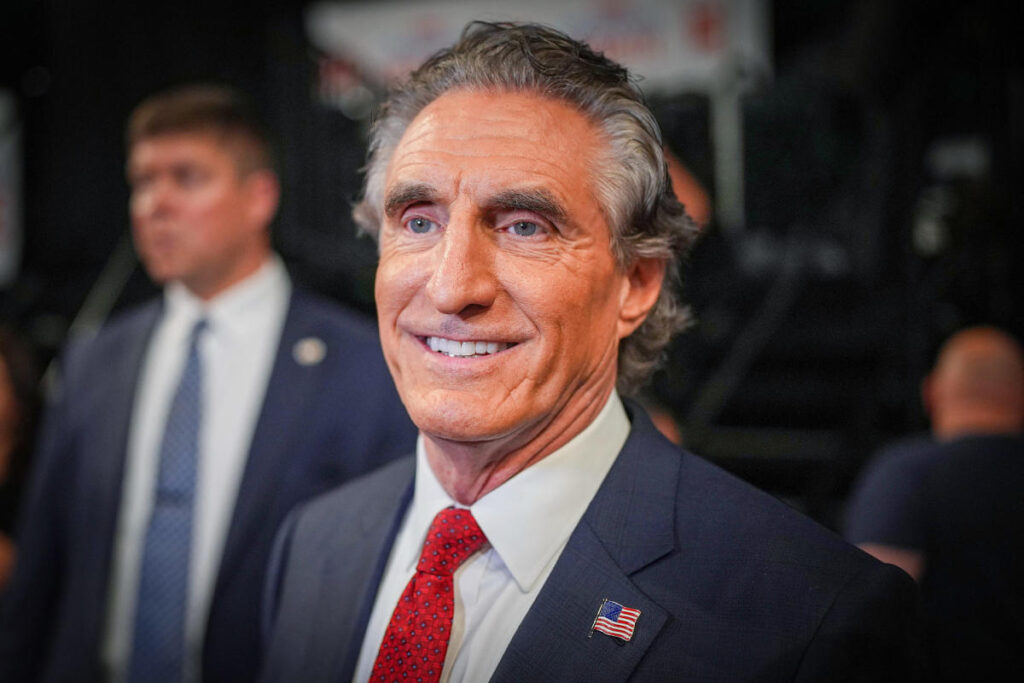On a significant day within the unfolding narrative of his administration, President-elect Donald Trump announced his plan to appoint North Dakota Governor Doug Burgum as his nominee for Secretary of the Interior. Trump made this announcement during an event at Mar-a-Lago, where he excitedly hinted at Burgum’s selection without explicitly mentioning his name until he playfully revealed it before the audience. Trump praised Burgum for his characteristics and included a warm mention of his wife, Kathryn. The enthusiasm surrounding Burgum’s nomination was palpable, marking a notable moment that highlighted Trump’s intentions for his future cabinet appointments.
Following Trump’s teasing revelation, he confirmed that Burgum would be appointed to head the Department of the Interior, calling him a “fantastic” choice for the position. The formal announcement was scheduled for the following day, with Burgum’s spokesperson stating that they would hold off on commenting until then. Anticipation echoed within the political community as media inquiries about Burgum’s potential nomination began surfacing. In response to questions about discussions regarding the appointment, Burgum remained coy, alluding to the unpredictability of the media landscape and referencing his social media platform, Truth Social, as a definitive source for information regarding his role.
Doug Burgum, who has a strong presence in the political arena, had previously campaigned actively for Trump. He was initially considered as a potential running mate before Trump ultimately chose JD Vance for that role. Before his political career, Burgum garnered attention for his impressive business acumen. He sold a software company to Microsoft for a staggering $1.1 billion in stock in 2001 and subsequently held a senior vice president position at Microsoft until 2007. His experience extends to various business ventures, including real estate and venture capital, which bolstered his reputation as a pragmatic leader with an understanding of economics.
Since his election as governor in 2016, Burgum has navigated a complex political landscape, winning re-election in 2020 against the backdrop of increasing electoral challenges. Interestingly, North Dakota legislators implemented term limits for governors in 2022, which prevented future governors from serving more than two terms; however, this legislation did not apply to Burgum, who was already serving in office. In a strategic decision to pivot in his political career, Burgum has chosen not to pursue a third term, making way for his successor, Representative Kelly Armstrong, who is set to take over the governorship in December, shortly after Burgum’s tenure concludes.
While Burgum’s term as governor is ending, his attempt to run for the presidency is another significant chapter in his political journey. He launched what many viewed as a long-shot campaign, which ultimately led to his withdrawal from the race in December 2023 because he did not qualify for the primary debate that month. This development reflects the often tumultuous nature of political ambitions, particularly within a landscape dominated by more established figures. His presidential bid, though not fruitful, showcased his willingness to engage with national political issues, which likely resonated with Trump as he sought cabinet members who could approach governance with innovative strategies.
In conclusion, Trump’s announcement regarding Burgum’s nomination for Secretary of the Interior emphasizes the importance of connections and prior experiences in the selection process for his administration. Burgum’s combination of business savvy and political experience has likely positioned him well to take on the challenges expected within the Department of the Interior, which oversees vast natural resources and manages federal lands. As both Trump and Burgum move forward, the eyes of the nation will be watching closely to see how this new appointment may influence policies and initiatives related to land management, resource conservation, and native affairs under the incoming administration.

